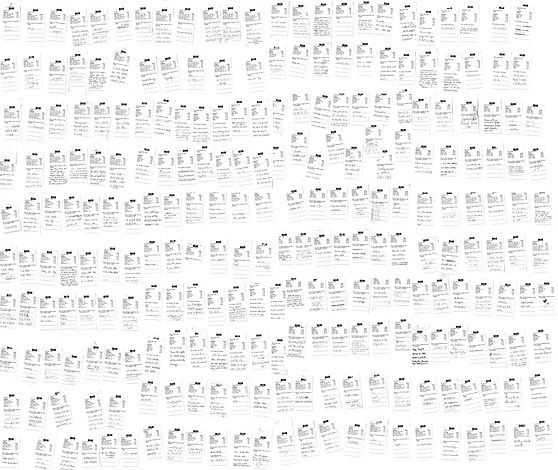Generative Research Printer

How can we find out what people think about purchasing stereotypes?
HOW CAN WE TURN OUR RESEARCH INTO AN EXPERIENCE? A STRATEGY REVIEW OF THE RECIPT PRINTER.
Money is a multi-faceted, dynamic entity - no longer just a tool we exchange for goods. As it has this power over us, it earned the right to be examined, explored and turned over in a new light.
The interactive prompt generator was designed to discover this.
A curiosity of mine turned into a live research method.
Project timeline: 1 month
Idea for research generation
I've always been a fan of looking at a problem from the other side, a different perspective. I'm often the Devil's Advocate.
Through ongoing research within the Circus project, we'd found that asking people about money gives them the opportunity to project the image of themselves they want you to see, not the honest answer. By completely removing the researcher in the interaction, you remove this, and a level of researcher bias.
Insight 1: Don't ask people about their opinions directly.
We'd also found that money is a broad topic, affecting so much in our every day lives, that it was difficult to untangle the connections and find strong themes.
Insight 2: The research and experience has to be within a specific framework to be successful.
Lastly, given that it was such a serious and for some, sensitive topic, it was clear that we needed to promote a sense of reward through the engagement.
Insight 3: The more enjoyable a task, the better the outcome for both the researcher and the participant.


Through these insights came objectives: subtle, specific and fun.
The printer design allowed for some curiosity, and discovery of the unknown (similar to the Birdsong project), plus a moment of privacy to read your receipt, ponder the ideas you had before writing them anonymously and adding them to a growing collection.


Installation and Delivery
Initially, the inconspicious black box was placed on the pedestal awaiting its participants, however witnessing a few mishaps, a single line instruction was added, plus an arrow to direct people to the interaction.

In the code, seven different variants were programmed to print in sequence, hopefully eliminating a repeat print within a group of participants, but restrictive enough that trends would be able to appear.
Across the five days of the show, we observed many people not only stopping to engage with the interaction, but also to look at the visual display of receipts, read what others had written, photograph (and selfie!) the display.
The printer in action!




Guests of the exhibition interacting with the printer without prompting.

The (ONGOING) Outcome
The project received a high volume of traffic, comments and engagements, and this was reflected in the 200+ responses from the receipt printer across the five days the exhibition was open.
On reflection, there wasn't always consistency during the research time: there were instances where the printer was left unmanned, and other times when a group member was present to talk though other areas of research. Due to limitations of the space, and the need for consent, it wasn't possible to stand back and simply film/watch all the interactions from afar.
Additionally, the setting of a graduate exhibition was primed for interested parties to engage with student work. If this was placed in a shop, a library, next to an ATM, how would it fare?
The receipts are however showing some interesting trends, and are currently being processed, sorting them into their categories, analysing the data and producing the insights. This update will be available soon.
